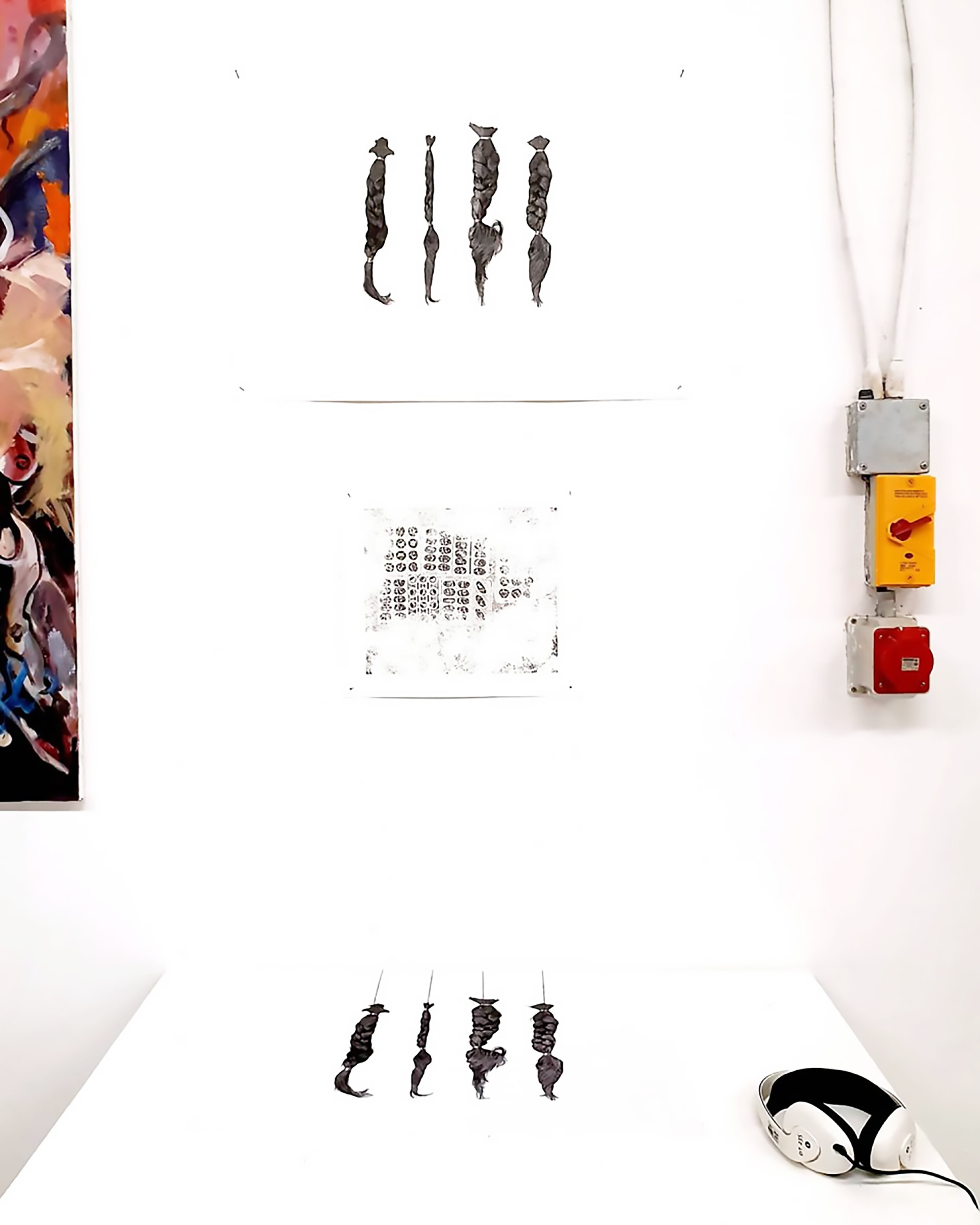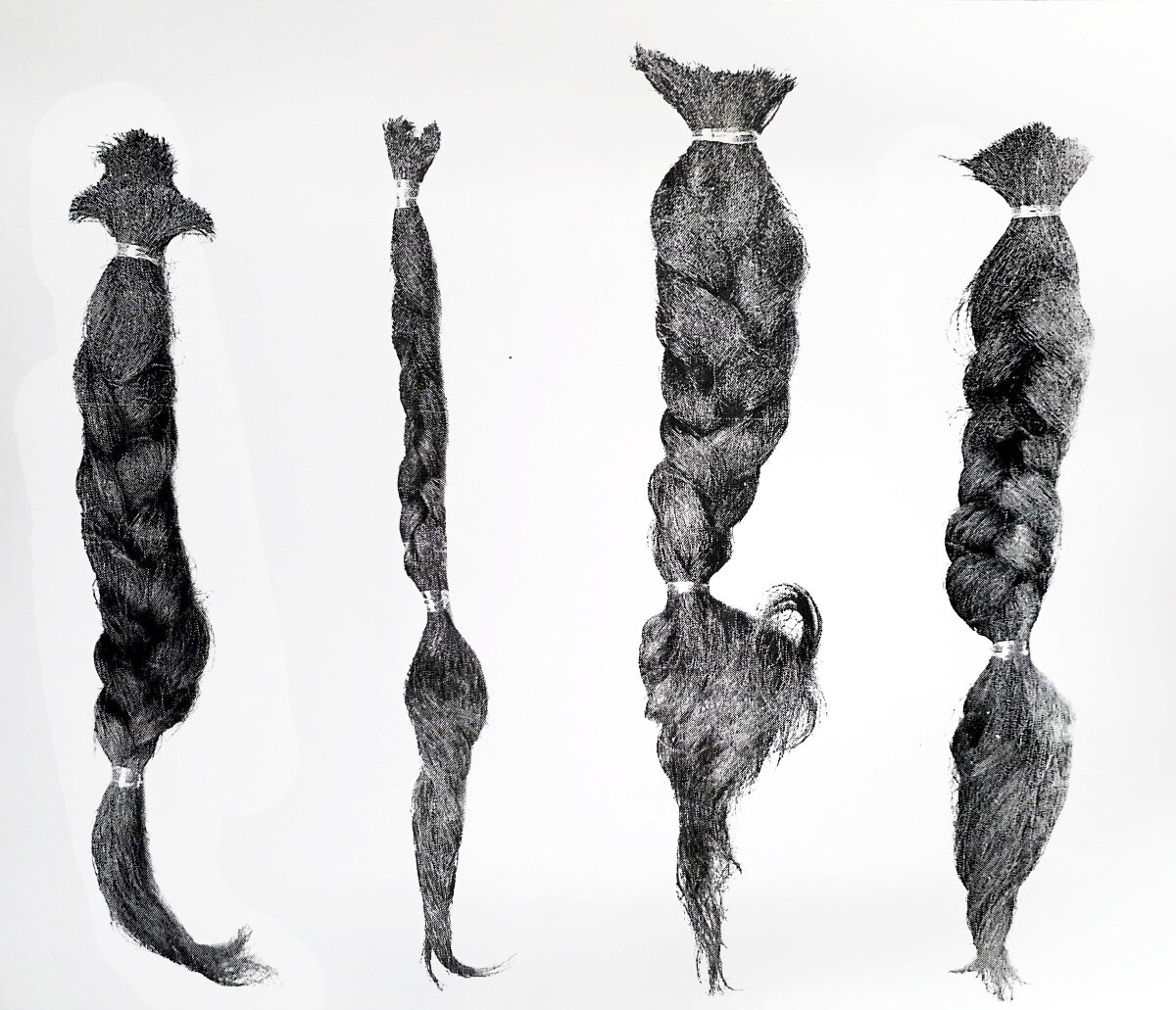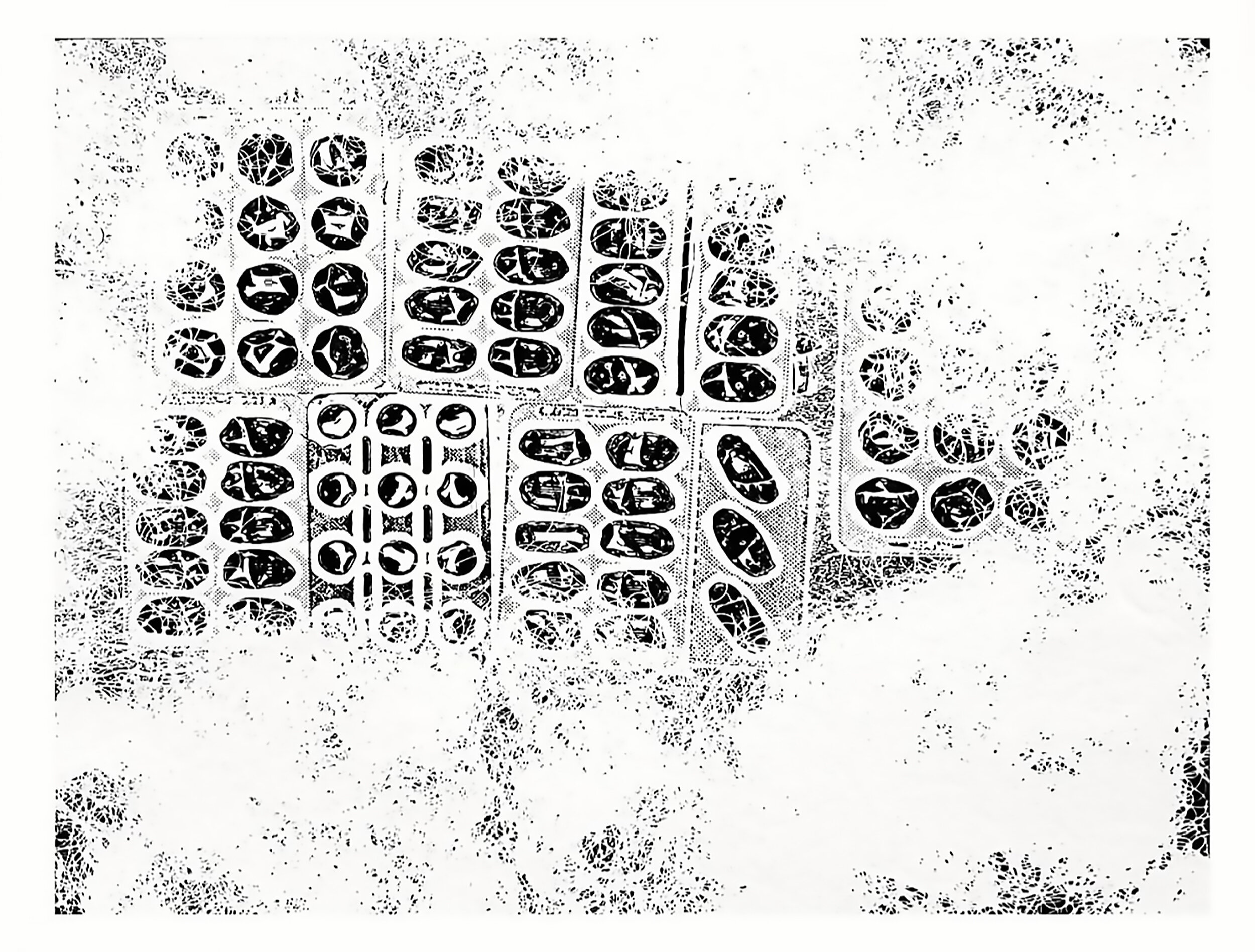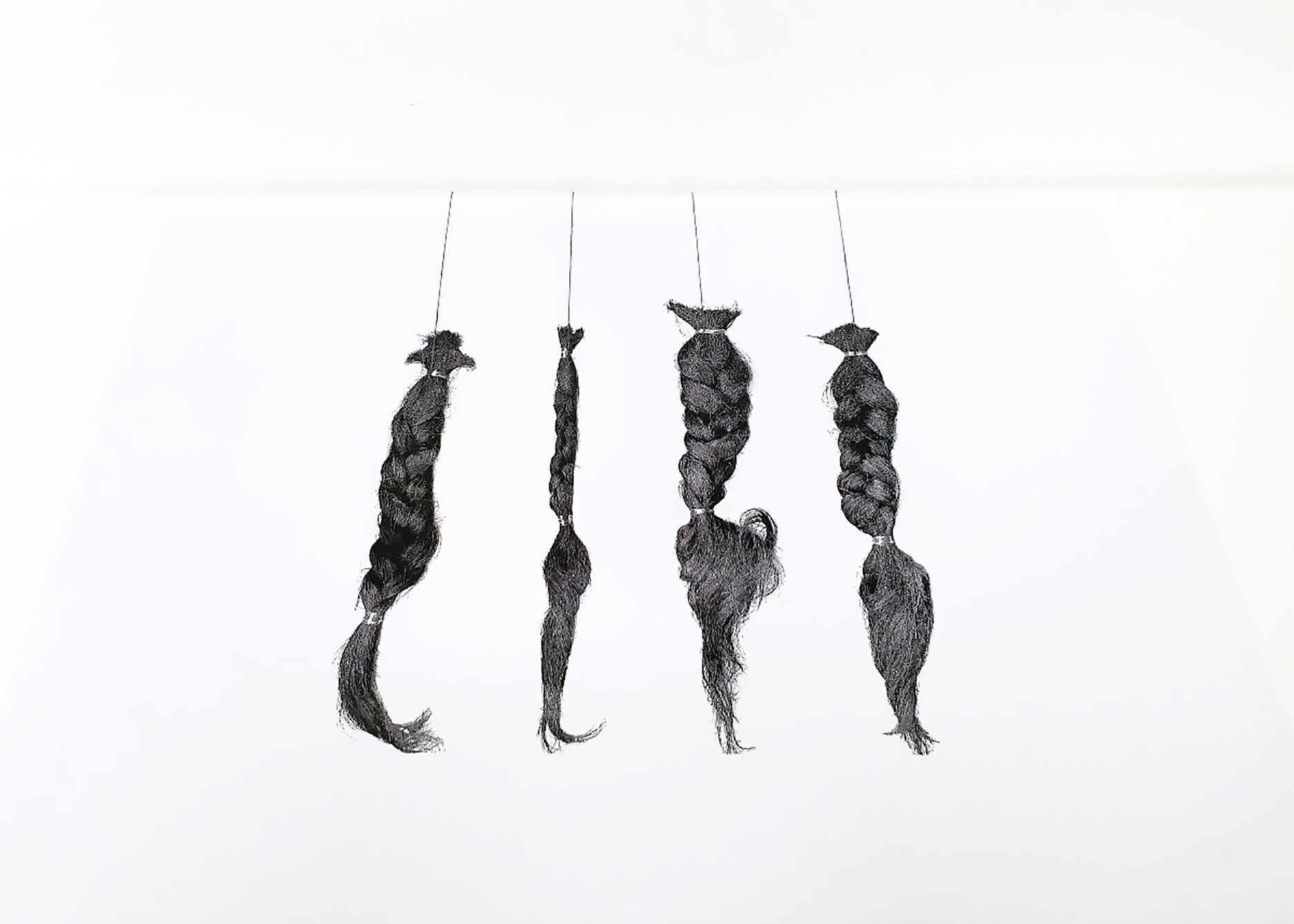The Hair Archives - Thanatocoenose Series (2020)
Content Warning: References to hate crimes, suicide, sexual harassment & domestic violence.
The project assembles as an unapologetic public testimony, and as a site of digital creative resistance against the daily intersectional oppressions, that manifests in the lives of the hidden, the unheard and the unrepresented.
Medium: a set of prints; two etchings, and one interactive, audio-based visual screen print.
Materials: the artists personal collection of medication packets, and hair from episodes of trauma-induced alopecia (including hair cuts related to alopecia)





Definition: Thanatocoenose (also known as death assemblage) refers to a collection of dead life forms that are found together, having previously interacted as a community within an ecosystem.
The series holds three pieces:
’Exhibit A - Thanatocoenose Series’: Screen Print (top print in the photo)
’Exhibit B - Thanatocoenose Series’: Etching Print (middle print)
’The Hair Archives - Thanatocoenose Series’: Conductive Screen Print, Audio (via headphones) and Physical Computing (table-based print).
The Hair Archives - Thanatocoenose series (2020) wields an artivist approach to spotlight the drivers of social, political, sexual, and cultural oppressions, that are experienced on a daily basis within minority communities, and the intersections. These drivers have been applied to personal and organic matter, such as hair and medication packets - items we are all familiar with, whether disabled or non-disabled. However, in the disabled, chronic illness, mad* and neurodivergent communities, for some these items are of the everyday - they are part of a strict and/or necessary routine and ritual for health, wellbeing and quality of life. The act of printing the organic materials served as a commemoration of pain and perseverance.
Exhibit A was printed twice, once as a general screenprint, and again, as a conductive screenprint attached to physical computing and code. When lightly grazing each braid - an intimate act - audio can be heard through the headphones attached. Each braid vocalises a lived experience-based derogatory comment the artist has been subjected to as a disabled Brown woman living with visible differences, physical impairments, and invisible conditions. The conductive screenprint engages with themes and narratives that are usually censored by society - the, "out of sight, out of mind" approach to real and raw lived experience of multiple oppressions and discrimination (ableism, sexism and misogyny, racism, ethnicism, ageism, physical appearance, visible differences, and classism).
The artist herself is an underrepresented, unheard, hidden and censored voice in society. As such, she was, and still is, interested in the idea of anthropomorphising the prints of the organic objects to ‘provide a voice’, to re-world, and breathe life into the ritualistic, medical, and bodily objects of her everyday - the objects that witness her pain.
*the word ‘Mad’ is used in reclamation, to learn more, explore the world of Mad Studies and Mad Pride.
X-rays (under the data protection act), images and works. All Rights Reserved ©️ 2021 Aminder Virdee.